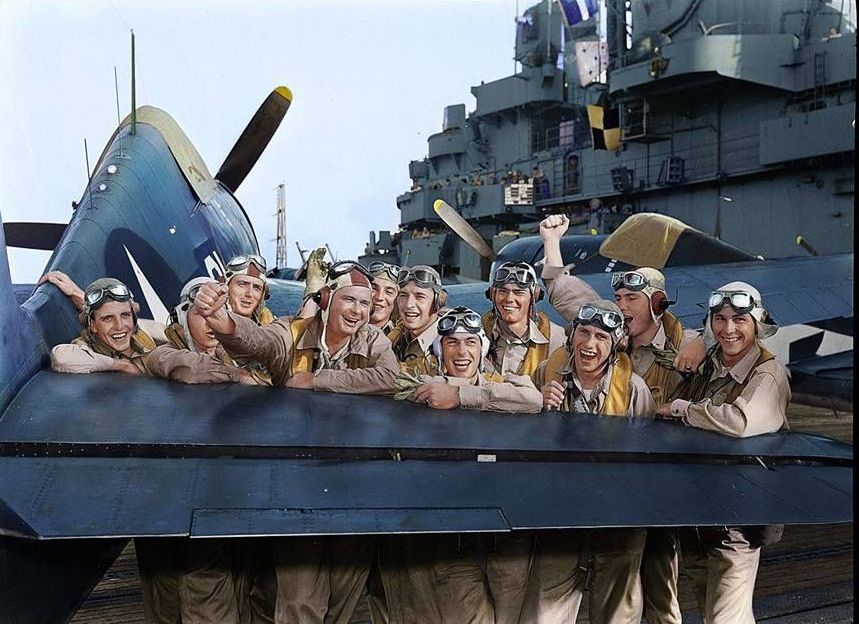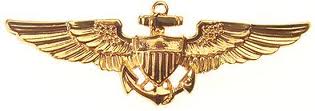Testimony of Pilot# 17
Proceedings Magazine – September 2011 published an article by Former Secretary of the Navy John Lehman “Is Naval Aviation Culture Dead?” discussing the fallout of Tailhook ’91 and the effect political correctness has had on a hard-earned mystique, noting The swaggering-flyer mystique forged over the past century has been stymied in recent years by political correctness.
Secretary Lehman’s focal point and full text go beyond the scope of Testimony of Pilot Chapter 3, “Where did/do we get such men?” but his lead in defines our heritage very well.
from
Is Naval Aviation Culture Dead?
by John Lehman
Proceedings Sept 2011, U.S. Naval Institute
We celebrate the 100th anniversary of U.S. naval aviation this year, but the culture that has become legend was born in controversy, with battleship admirals and Marine generals seeing little use for airplanes. Even after naval aviators proved their worth in World War II, naval aviation faced constant conflict within the Navy and Marine Corps, from the War Department, and from skeptics in Congress. Throughout the interwar period, its culture was forged largely unnoted by the public.
It first burst into the American consciousness 69 years ago when a few carrier aviators changed the course of history at the World War II Battle of Midway. For the next three years the world was fascinated by these glamorous young men who, along with the Leathernecks, dominated the newsreels of the war in the Pacific. Most were sophisticated and articulate graduates of the Naval Academy and the Ivy League, and as such they were much favored for … interviews and War Bond tours. Their casualty rates from accidents and combat were far higher than other branches of the naval service, and aviators were paid nearly a third more than non-flying shipmates. In typical humor, a pilot told one reporter: “We don’t make more money, we just make it faster.”
Landing a touchy World War II fighter on terra firma was difficult enough, but to land one on a pitching greasy deck required quite a different level of skill and sangfroid. It took a rare combination of hand-eye coordination, innate mechanical sense, instinctive judgment, accurate risk assessment, and most of all, calmness under extreme pressure. People with such a rare combination of talents will always be few in number. The current generation of 9-G jets landing at over 120 knots hasn’t made it any easier.
Little wonder that poker was a favorite recreation and gallows humor the norm. In his book Crossing the Line, Professor Alvin Kernan recounts when his TBF had a bad launch off the USS Suwanee (CVE-27) in 1945. He was trying desperately to get out of the sinking plane as the escort carrier sped by a few feet away. Looking up, he saw the face of his shipmate, Cletus Powell (who had just won money from him playing blackjack), leaning out of a porthole shouting “Kernan, you don’t have to pay. Get out, get out for God’s sake.” No wonder such men had a certain swagger that often irritated their non-flying brothers in arms.
Louis Johnson’s Folly
By war’s end more than 100 carriers were in commission. But when Louis Johnson replaced the first Secretary of Defense, Jim Forrestal—himself one of the original naval aviators in World War I—he tried to eliminate both the Marine Corps and naval aviation. By 1950 Johnson had ordered the decommissioning of all but six aircraft carriers. Most historians count this as one of the important factors in bringing about the invasion of South Korea, supported by both China and the Soviet Union. After that initial onslaught, no land airbases were available for the Air Force to fight back, and all air support during those disastrous months came from the USS Valley Forge (CV-45), the only carrier left in the western Pacific. She was soon joined by the other two carriers remaining in the Pacific.
Eventually enough land bases were recovered to allow the Air Force to engage in force, and more carriers were recommissioned, manned by World War II vets hastily recalled to active duty. James Michener’s The Bridges at Toko-Ri and Admiral James Holloway’s Aircraft Carriers at War together capture that moment perfectly. Only later was it learned that many of the enemy pilots were battle-hardened Russian veterans of World War II.
By the time of the armistice, the Cold War was well under way, and for the next 43 years, naval aviation was at the leading edge of the conflict around the globe. As before, aviators suffered very high casualties throughout. Training and operational accidents took a terrible toll. Jet fighters on straight decks operating without the sophisticated electronics or reliable ejection seats that evolved in later decades had to operate come hell or high water as one crisis followed another in the Taiwan Strait, Cuba, and many lesser-known fronts. Between 1953 and 1957, hundreds of naval aviators were killed in an average of 1,500 crashes per year, while others died when naval intelligence gatherers like the EC-121 were shot down by North Koreans, Soviets, and Chinese. In those years carrier aviators had only a one-in-four chance of surviving 20 years of service.
Vietnam and the Cold War
The Vietnam War was an unprecedented feat of endurance, courage, and frustration in ten years of constant combat. Naval aviators flew against the most sophisticated Soviet defensive systems and highly trained and effective Vietnamese pilots. But unlike any previous conflict, they had to operate under crippling political restrictions, well known to the enemy. Antiaircraft missiles and guns were placed in villages and other locations known to be immune from attack. The kinds of targets that had real strategic value were protected while hundreds of aviators’ lives and thousands of aircraft were lost attacking easily rebuilt bridges and “suspected truck parks,” as the U.S. government indulged its academic game theories.
Stephen Coonts’ Flight of the Intruder brilliantly expressed the excruciating frustration from this kind of combat. During that period, scores of naval aviators were killed or taken prisoner. More than 100 squadron commanders and executive officers were lost. The heroism and horror of the POW experience for men such as John McCain and Jim Stockdale were beyond anything experienced since the war with Japan.
Naturally, when these men hit liberty ports, and when they returned to their bases between deployments, their partying was as intense as their combat. The legendary stories of Cubi Point, Olongapo City, and the wartime Tailhook conventions in Las Vegas grew with each passing year.
Perhaps the greatest and least known contribution of naval aviation was its role in bringing the Cold War to a close. President Ronald Reagan believed that the United States could win the Cold War without combat. Along with building the B-1 and B-2 bombers and the Peacekeeper missile, and expanding the Army to 18 divisions, President Reagan built the 600-ship Navy and, more important, approved the Navy recommendation to begin at once pursuing a forward strategy of aggressive exercising around the vulnerable coasts of Russia. This demonstrated to the Soviets that we could defeat the combined Warsaw Pact navies and use the seas to strike and destroy their vital strategic assets with carrier-based air power.
Nine months after the President’s inauguration, three U.S. and two Royal Navy carriers executed offensive exercises in the Norwegian Sea and Baltic. In this and subsequent massive exercises there and in the northwest Pacific carried out every year, carrier aircraft proved that they could operate effectively in ice and fog, penetrate the best defenses, and strike all of the bases and nodes of the Soviet strategic nuclear fleet. Subsequent testimony from members of the Soviet General Staff attested that this was a major factor in the deliberations and the loss of confidence in the Soviet government that led to its collapse.
During those years naval aviation adapted to many new policies, the removal of the last vestiges of institutional racial discrimination, and the first winging of women as naval aviators and their integration into ships and squadrons.
The remainder of the article discusses Tailhook ’91 and fallout in both the political and Navy spheres. Lehman then concludes:
Aviators have been the principal source of offensive thinking, best described by Napoleon as “L’audace, l’audace, toujours l’audace!” (Audacity, audacity, always audacity!)
Those attributes of naval aviators—willingness to take intelligent calculated risk, self-confidence, even a certain swagger—that are invaluable in wartime are the very ones that make them particularly vulnerable in today’s zero-tolerance Navy. The political correctness thought police, like Inspector Javert in Les Misérables, are out to get them and are relentless.
The history of naval aviation is one of constant change and challenge. While the current era of bureaucracy and political correctness, with its new requirements … is indeed challenging, it can be dealt with without compromising naval excellence. But what does truly challenge the future of the naval services is the mindless pursuit of zero-tolerance. A Navy led by men and women who have never made a serious mistake will be a Navy that will fail.
***********************************
A comment by retired CDR Ward Carroll, with multiple tours as an F-14 Radar Intercept Officer, author of Punk’s War and current Director of Outreach and Marketing at the U.S. Naval Institute:
The Navy soon severed all official ties with the Tailhook Association, and membership sagged as officers with career aspirations feared that joining would be viewed as an act against the Navy. “Tailhook” was reduced to a punchline for late-night comics. There was little chance the organization would survive.
But it did.
The Tailhook Association survived where lesser organizations would have folded because of the bond among those who’ve served in carrier aviation. That bond outlasts the revolting conduct of a few bad actors or the judgment of politicos who deign to care as long as it serves them. That bond is what continues to accomplish the mission, whether it’s putting bombs on target in Afghanistan or bringing a Super Hornet safely back aboard the ship on a stormy night.






